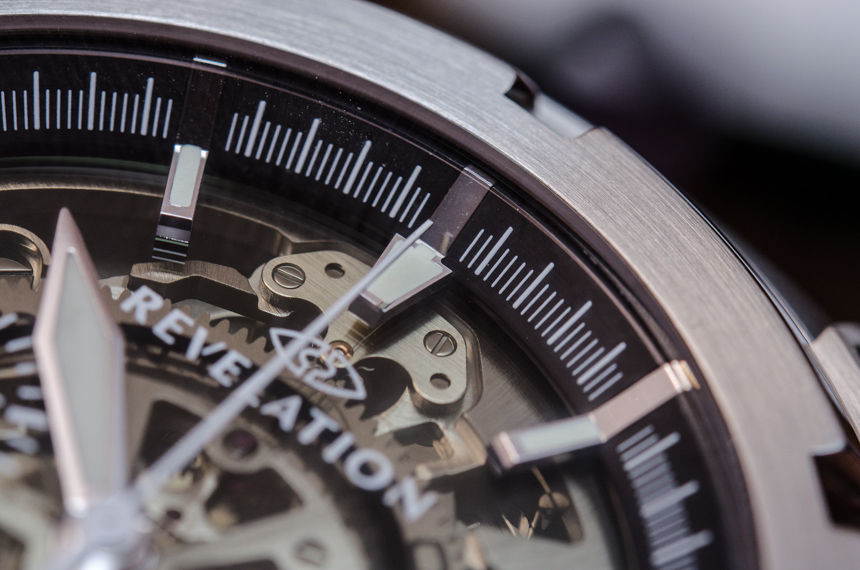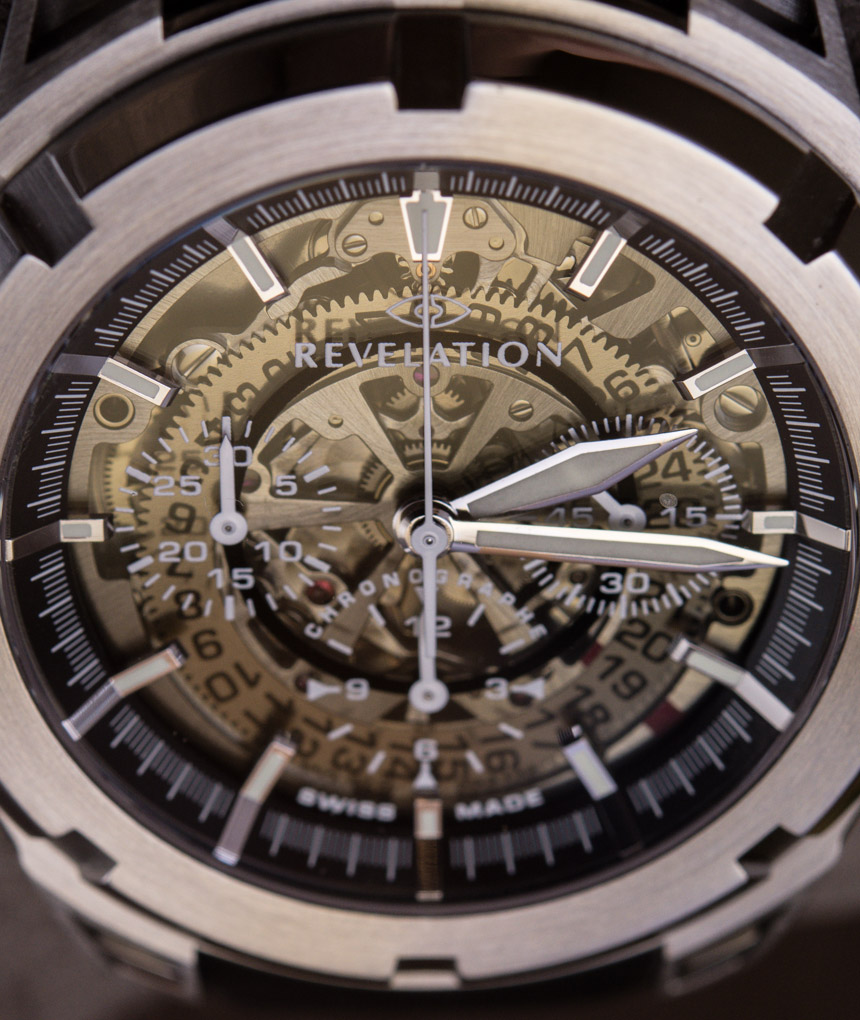
Since the 1972 debut of the Royal Oak, the term “luxury sports watch” no longer sounds weird. If anything, over the past four decades, and especially since the new millennia, this previously unimaginable market segment has surprised us, brought forth new horological designs, and ultimately created a major global category unto itself. In other words, the most popular high-end segment watches are luxury sport timepieces. What we are looking at today is the Revelation R03 Chronograph and it stands out as unique by offering a two-dial system in a very attractive package.
Over time, we have seen two different practices in the race for an ever larger share of this important sport watch market. For one, more established companies primarily rely on the resurrection and reinterpretation of some of their most iconic designs. Also, a great number of newcomer brands harnessed technological innovation and more daring designs in an effort to win over customers.
The very Swiss and very new Revelation is one of the latter, as this more recently founded brand comes to the battle of luxury sports chronographs with a high quality package and a technical feat that I just could not ever get bored of. But, just like the “big ones,” each and every small brand has its own story, so before we dive into the details of the watch at hand, let’s quickly acquaint ourselves with Revelation and the people behind it.
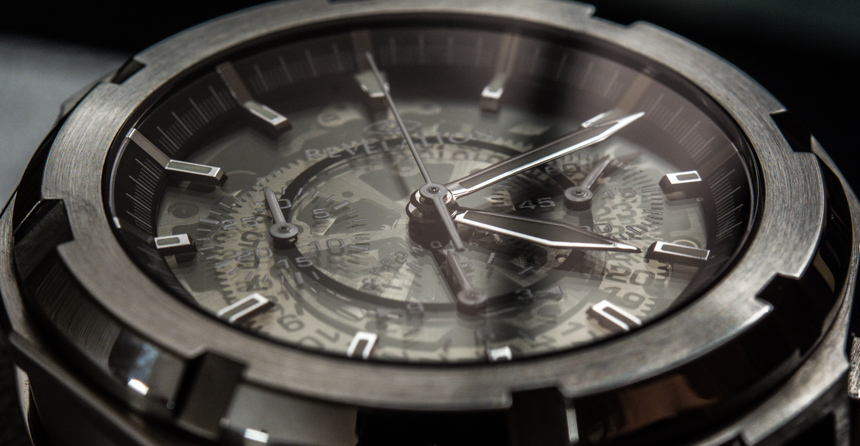
I recently visited the brand’s tiny workshop in Lully-sur-Morges and had the opportunity to meet the founders, the couple of Anouk Danthe and Olivier Leu. They are both watch designers with some extensive experience when it comes to creating new watches. Anouk has worked for Audemars Piguet, Omega and Jaeger-LeCoultre, while Olivier has worked with more than eighty – small and major – brands as a freelance watch designer. In 2007 they set themselves a new challenge, one that is rightfully the dream of most watch makers and designers: they established their own company, called Revelation, and based it on the superb idea of producing a unique watch dial that has never been done before.
In 2011 they debuted the brand with the R01, a limited edition that contained a very unique tourbillon movement and the first version of what has to be the trademark feature of the brand: their proprietary “Magical Watch Dial” technology. Since then they have further developed the technology of the dial and incorporated it in their new and more accessibly priced chronograph model, the R03. It is this model and its amazing dial that I had the chance to check out – literally – in-depth.
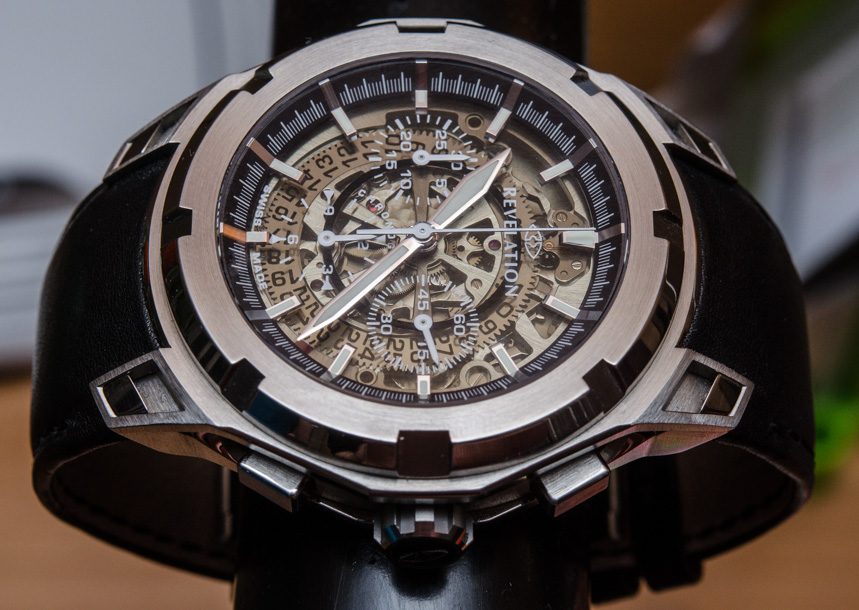
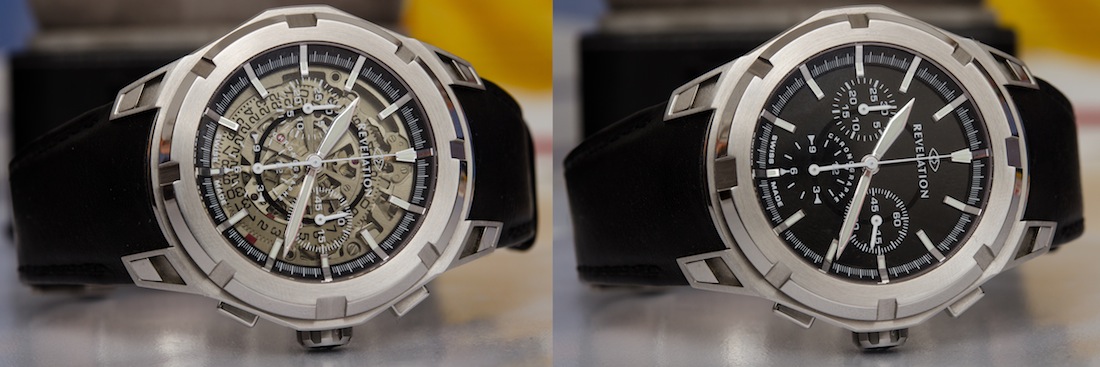
So, first things first, what is this “Magical Watch Dial” that I’m going on about? I will admit that I am not exactly a fan of the term “Magical Watch Dial,” but the only reason for me to say this is that I am way too fond of what it actually does. The name just does not do it justice in my opinion. Anyway, what you see above appears to be two very different watches, but – you guessed it! – it’s actually the exact same watch, moments later. What makes this “magic” possible is a very clever system that Revelation developed and patented. It consists of some gears hidden inside the bezel and the case, as well as a very unique dial-layout and surface treatment.
The way it works is as follows: given that the dial is in the “locked” position, i.e. when it is this very cool opaque black color, the bezel has to be rotated counter-clockwise to make the dial seamlessly go from black to almost perfectly transparent. After just 90 degrees of rotation, the dial becomes almost entirely translucent, save for a slight green-ish hue. The technology that allows this to happen is called polarization, and it is a special treatment on the surface of the dials. You read that right, it actually is dials, because for this to work the watch has to have two dial panes, rotating on top of one another. What polarization practically means is the creation of microscopic grooves (about 190 nanometers “wide”) on the surface of the dial, as seen on the image below. Both dials have these invisible grooves on them and as one of the dials is rotated, the grooves on the two dials either line up with one another or create a grid.
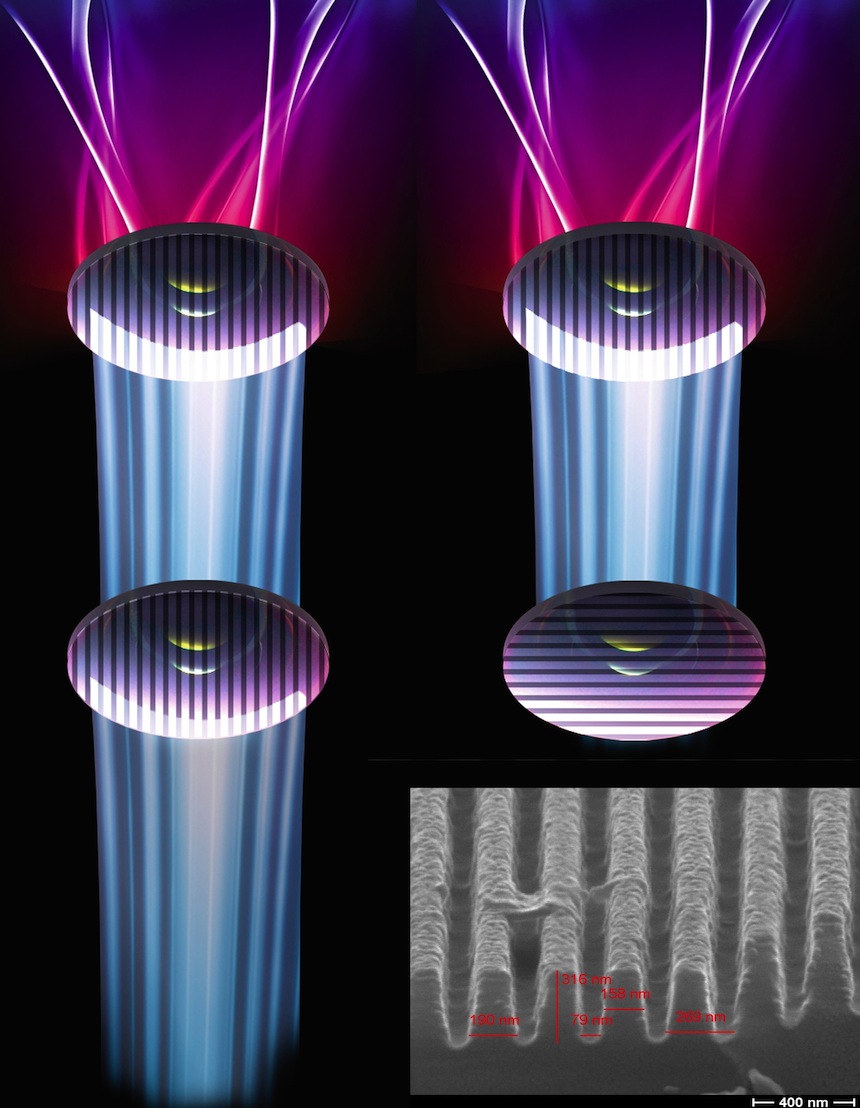
As illustrated above, the grid that these incredibly tiny grooves create is so fine that not even light can penetrate it. Now, while polarization is a technology that is used in several very different fields of life, with cinema’s and TV’s 3D glasses springing to mind first, it is something that to my knowledge had never been used in watch making before. Furthermore, getting the coating just right and creating the system that would allow for a practical use in a wristwatch was something that took around two years for Revelation to research. One of the major issues was getting the best coating possible, meaning a treatment that would match the extremely demanding tolerances of watch making, remain durable and lasting over time, and also provide an aesthetically pleasing result in both the open and the closed positions. Revelation entrusted the production of the polarizing discs to the renowned Swiss Center for Electronics and Microtechnology (CSEM). The brand has recently received some important funding from the Swiss government, allowing them to further research and develop this technology’s implementation in watches.
As for another major challenge, there was the issue of cramming the rotating system’s gears and transmissions, as well as the two dials into a wristwatch without making it too bulky, fragile, or difficult to use. The solution was found with what is called a worm screw, also known as the Archimedes screw, a more than 2000 years old design. It is then coupled with a double differential that rotates a ring carrying one of the polarized discs, so that the transmission between the black and the transparent dials can happen. Understandably, all this also necessitates a specially designed case, one that has a uniquely crafted interior with dedicated space for this entire system. Upon my visit we checked out the specialized case making manufacture located on the outskirts of Geneva, where all Revelation cases are made – but more on that later.
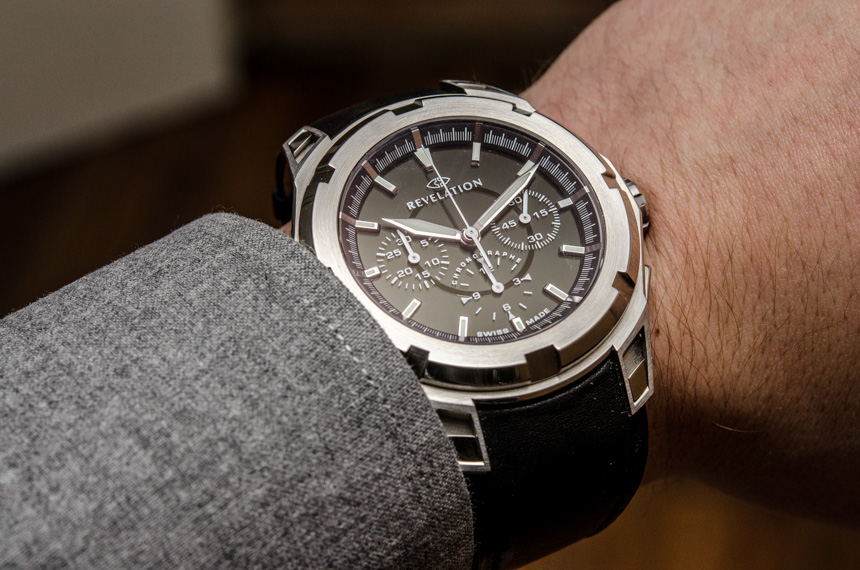

So, given all this methodology, just how well does this “magical dial” perform in real life? After all, its primary function is to make for a 2-in-1 watch, allowing the wearer to choose between a slightly more restrained, albeit still very modern looking sports chronograph with a deep black dial, or a blast of high-tech, borderline futuristic exposure of fine watch making. And while we see this two-in-one concept fail miserably in about 95% of the time at every field of life, I was surprised to see that Revelation actually got it right this time… it works!
In an effort to fully explain just how well it works, let me share my first impressions of the watch. I first saw it in person at SalonQP last year and, frankly, it blew my away from the moment I could first see for myself what it does – I spent several minutes just looking at the seamless transition between black and transparent, trying to figure out how it worked! Actually, the entire concept and what it offers is in some ways comparable to the mechanical watch: the action of rotating the bezel, its locking into its terminal positions, and the apparent, although incomprehensible transition brought back my first memories of seeing a mechanical watch movement. It is right there before our eyes, but it still is very difficult – and fascinating – to try and wrap our heads around just exactly what, why, and how it happens. And I feel this is where and why this dial mechanism is so exciting.
